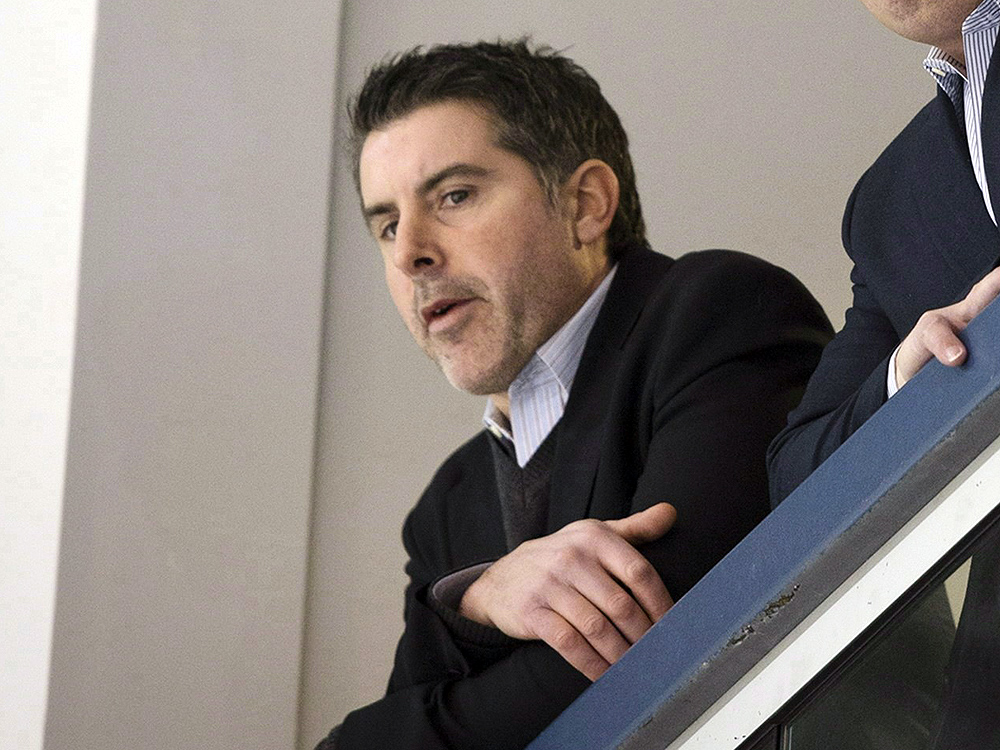“I’m not worried about six or seven right now. I’m worried about one.”
– Former Leafs GM Dave Nonis on the David Clarkson contract, July of 2013
It turns out year seven of David Clarkson’s contract might turn out to be the most helpful one for the Toronto Maple Leafs.
It is quite the twist in happenstance. As it turns out, the seventh year of the Clarkson deal will overlap the first year of Auston Matthews and Mitch Marner’s second deals in Toronto — exactly the sort of scenario the Leafs were looking to avoid when they jettisoned his contract and took back Nathan Horton in return in the deal with Columbus back in 2015. And yet with Clarkson’s playing career now over as he — like Horton — spends the final season of his contract on LTIR, his cap hit actually might come in handy for the Leafs as they attempt to get Marner under contract.
Before we get into some thoughts on how this impacts the Leafs and their cap situation, let’s lay out some of the basic truths about LTIR (forgive me if you’re already aware of all of this — take it as a refresher course):
- LTIR is not free cap space. One more time: LTIR is not free cap space. You cannot acquire a player with a $5.25 million cap hit (Clarkson) and send back one with a $750,000 hit (Garret Sparks) and actually gain cap room. That’s not how it works.
- LTIR relief is only available to teams that have players on LTIR and are actually exceeding the cap limit. The formula: Cap Hit of LTIR Player – Amount of Cap Space Available = Amount Team Can Exceed the Cap. $1 million in cap space doesn’t become $6 million if you add a $5 million player and place him on LTIR. It could allow you to exceed the upper limit by up to $4 million, though.
- LTIR is available in the offseason, so the 10% offseason cushion does not need to include Nathan Horton and David Clarkson’s contracts should Marner be signed in the offseason.
Knowing all of the above, teams making use of LTIR cap relief have two options if they want to maximize the amount of relief they’re receiving as of the roster deadline on Oct. 1:
- Build a roster that exceeds the cap ceiling by something very close to the full amount of the LTIR contract(s).
- Build a roster that is as close to the upper limit as possible to ensure you are carrying as little cap space as possible before you initiate LTIR relief.
In the Leafs’ case, cap manager Brandon Pridham would have drawn up a series of 23-man roster scenarios to see exactly how close the team could’ve gotten to the cap limit without Mitch Marner signed. These scenarios would’ve fallen roughly $3-4 million short. That becomes meaningful if there is any likelihood that Marner remains unsigned by the Oct. 1 roster deadline, which is certainly a possibility at this stage; before the trade, there would not be enough space available if we subtract Horton’s money from the cap space that was already available to the team.
(I wouldn’t say this is indicative of the Marner negotiations being totally off the rails or anything; it just means that we are in late July now, nothing is done, the Leafs more or less have their roster in place with one RFA situation outstanding, and they need to cover their bases as best they can.)
That would’ve potentially placed them in a situation where they would’ve been unable to sign Marner to a deal of their liking while staying cap compliant, at least not without subtracting elsewhere on the roster first.
For the Leafs, Plan A was to enter the season with all of their players signed while collecting up to $5.25 million in relief on Nathan Horton’s contract in order to make it all work. With two-plus months still remaining until the roster deadline, and with David Clarkson’s contract now added, the new Plan A is to get all of their players signed before camp and use up to $10.55 million in LTIR relief (depending on Marner’s final number) once the roster deadline arrives.
But they now also have a Plan B should Marner remain unsigned by Oct. 1, which is that Clarkson’s $5.25 million cap hit will allow Pridham to configure a roster that is as tight to the cap ceiling as possible at the roster deadline. The team won’t be carrying cap space (or very little) and they’ll be able to use the LTIR relief in the neighbourhood of up to $10.55 million once the Marner deal finally gets done. In order to get as close to the $81.5 million upper limit as possible, the Leafs can play around with their roster size and could shuffle a body or two in and out — with Ilya Mikheyev’s waiver-exempt entry-level contract being one option, and they’d also likely shuffle someone like Ben Harpur through waivers without much worry.
With all of this in mind, this was a shrewd move by the Leafs. They got a fourth-round pick for eating the $1 million in real salary on Clarkson and flipping Sparks to Vegas — keep in mind 26-year-old waiver-eligible backup goalies with sub .900 numbers in the NHL have close to zero value — but the biggest benefit is that they are not going to be as under the gun as the Marner negotiation reaches its most critical stages.
Some other thoughts/considerations:
There is also this to consider:
If Marner doesn't sign before the start of the season, the AAV of the first year of his contract will increase.
This may create additional complications for the Maple #Leafs, here are a few other thoughts to take into consideration with LTIR and signing after the season begins pic.twitter.com/uyxTv16gSo
— CapFriendly (@CapFriendly) July 24, 2019
I’ve heard different versions of this in terms of whether or not this is how proration works under LTIR, but we’ll take CapFriendly at their word for now. There is no doubt that for all kinds of reasons, the sooner the Marner deal gets done, the better.
That said, the Leafs are still in a better position today than they were yesterday cap-wise. It seems to me, if the Marner negotiation does indeed drag into the season, they could feasibly carry a smaller roster (say 18 or 19 players), use the full $10.55 million relief, and still work Marner in with a bigger cap hit in year-one (say $11-12 million in year one vs. 10.5). But based on CapFriendly’s interpretation above, if the year-one cap number balloons on the Leafs should the negotiation stretch towards the December 1 deadline, it would put them in a tougher spot.
– The other thing worth keeping in mind here is the possibility of an offer sheet. If I were looking at the Leafs situation as a rival club interested in Marner, I’m telling myself the following: Marner is clearly not worth four first-round picks and over $10.6 million in cap space. You could maybe argue he is worth $10.5 million, two firsts, a second, and a third. But if I submit an offer sheet worth $10.5 million in the latter scenario, the Leafs are certain to match it as of today (In addition to Marner needing to actually sign the offer, this is why an offer sheet hasn’t transpired as of yet).
The only way the Leafs might not easily match the $10.5 million offer is if they were really backed into a corner with their cap situation after the start of the season. If the Leafs had only the Horton LTIR relief available to them and were carrying cap space at the start of the 2019-20 regular season with Marner unsigned, a rival team were to throw an offer sheet at Marner for five years worth something just below the $10.568 million price point, and Marner actually signed it (if it reaches that point in Oct/Nov, it becomes more likely he would), the Leafs would be in a spot of bother. In that scenario, they would have had to start scrambling and subtracting from their team inside the timeframe of the week they’re afforded to decide whether or not to match the offer.
With yesterday’s trade, they’re more prepared if this drags into the season. With a roster snug to the $81.5 million upper limit as of Oct. 1 and ~$10.5 million in LTIR relief available once Marner is finally signed, they would be pretty close to where they are today vis a vis offer sheets: Anything under the $10.568 million gets matched fairly easily; anything above and you likely prefer the picks and the cap space.
– A lot of people are bringing up Jake Gardiner in the wake of this trade and the reality is nothing has changed on that front. Without moving out cap dollars, the Leafs don’t have the room unless maybe if he took a short-term deal at a major cut-rate. I do wonder if Gardiner is currently weighing medium-term offers at less AAV than he hoped for against short-term deals with a higher AAV — the latter option being a, “prove I’m healthy and productive and cash in next summer,” scenario.
For me, the outstanding Gardiner situation brings the Ceci decision immediately to mind. I was curious as to why the Leafs settled that situation so quickly rather than waiting to see if he was going to opt for the arbitration route, which would’ve given them the ability to potentially walk away from the settlement and wash their hands of the contract. I landed on the reasoning that the Leafs think Ceci can be salvaged in a better situation next to a better partner and that the team needed the RHD help — this is very likely the case, but part of me wonders if Ceci could be flipped to another team should Gardiner want to take something short term in Toronto.
The reason I think that possibility is quite unlikely: Why not load Ceci’s deal with bonuses to make it more marketable if you were going to flip him — especially if they might need to quickly move out money if the shit hits the fan in the Marner offer-sheet scenario? With what Gardiner should be able to command on a short or medium-term deal, the numbers just don’t add up presently.
– I was not a fan of what Kyle Dubas did at the backup position last season last Fall; they had a proven backup at the top of his game in Curtis McElhinney and were in a Cup-contending year, making the choice of Garret Sparks — who had not shown anything promising in the NHL or in camp — an unnecessary risk. It ended up costing the team some points in the standings as well as a fifth-round pick in order to add Michael Hutchinson, although the latter was partly to do with the Marlies’ situation at the time (Sparks may have been lost to waivers as opposed to passing through to the AHL last October, which wouldn’t have helped the Marlies anyway).
I’m guessing Dubas saw it as the right thing to do — providing an extended NHL opportunity after Sparks won the Calder Cup for him with the Marlies — and figured he could find backup help on the cheap pretty easily if it didn’t pan out (it didn’t).
I like the Leafs’ situation at backup goalie now, though. They’ve got two goaltenders in Hutchinson and Neuvirth signed to a one-year, $700,000 contract and a PTO, respectively, and both have not-insignificant NHL pedigrees. They should be able to figure out a capable backup here at a very cheap cap commitment.
– As Kyle Dubas adds yet another skilled winger project in Pontus Aberg — which lands somewhere in between his Nic Petan add and the previous Tyler Ennis signing as far as player type, production, upside — it is all the more clear that he’s not wavering even slightly on his steadfast commitment to the team’s skill and speed identity. He really hasn’t added much in the way of proven penalty killers or prototypical grinders for the bottom six, even with his low-commitment depth adds. I’ll be curious to see what Ilya Mikheyev brings on this front given his size and whether Mason Marchment gets a hard look in camp, though.


































